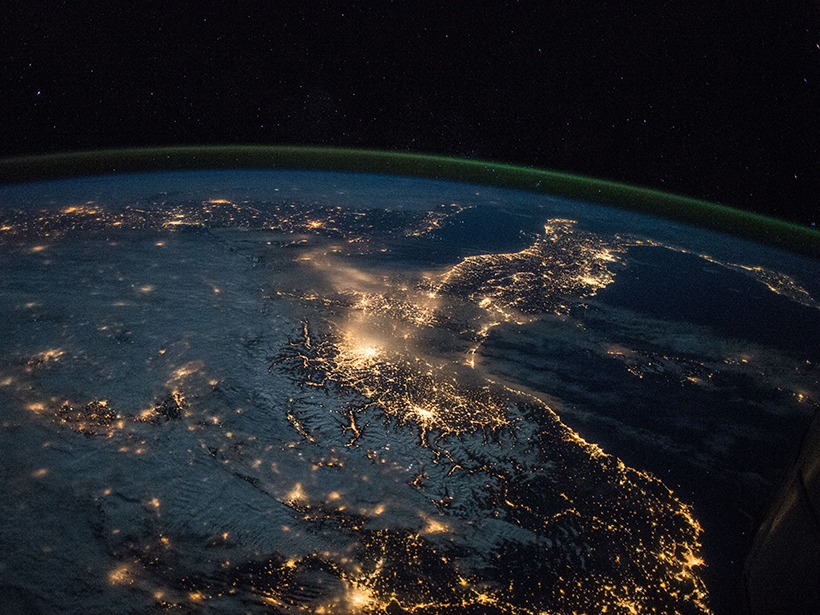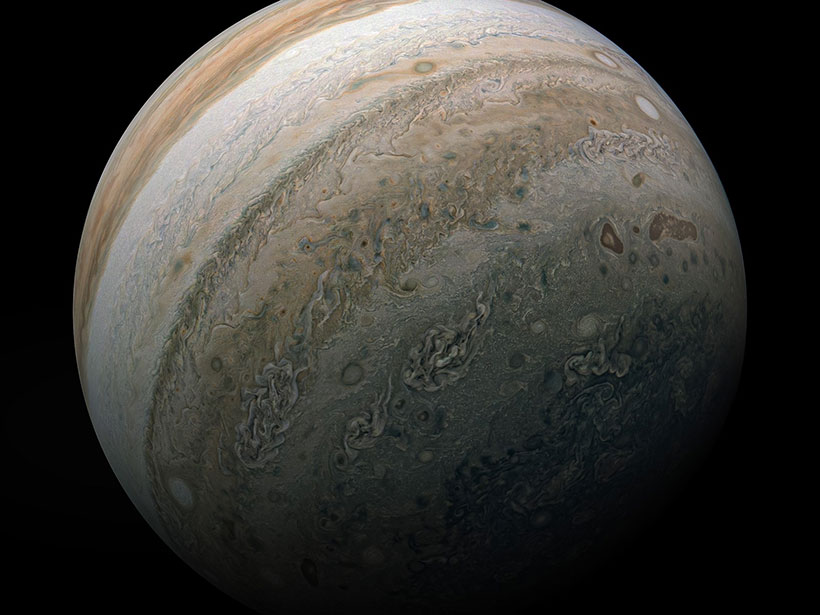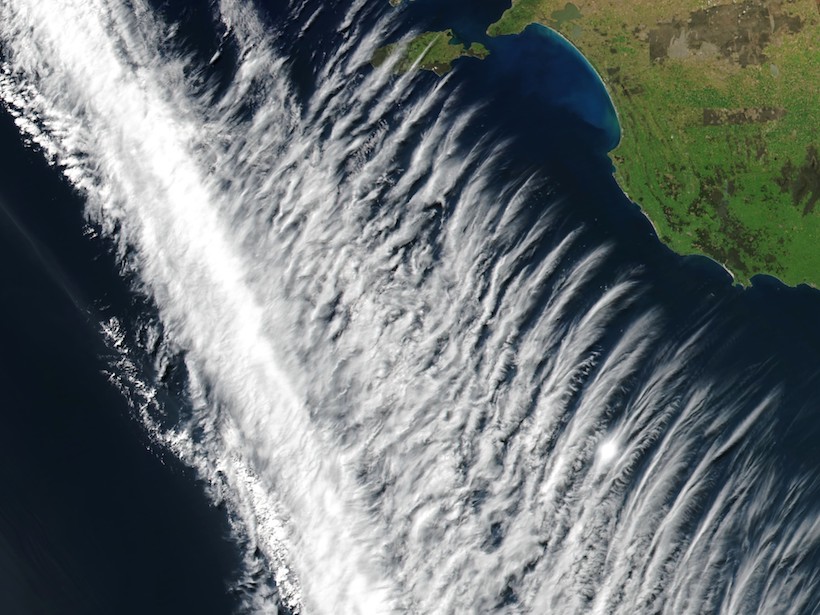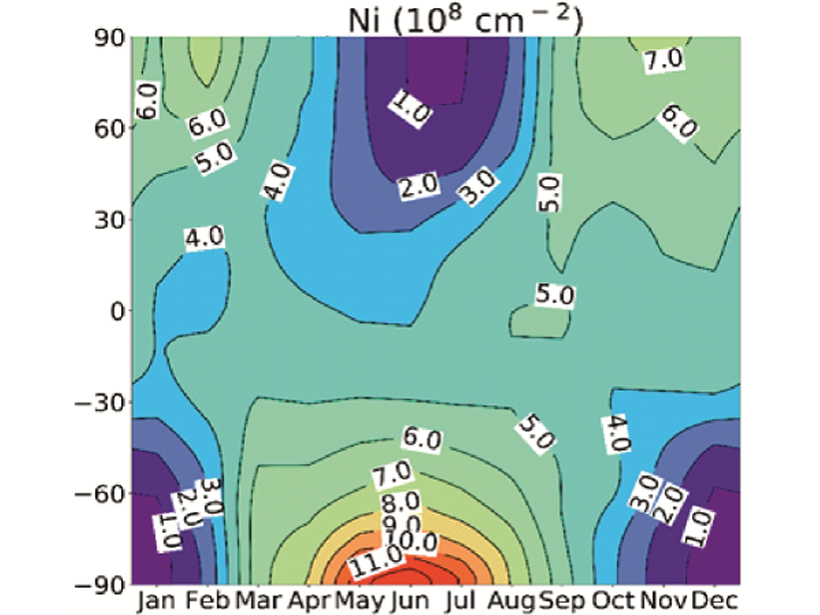Observations reveal a connection between auroral particle precipitation and scintillation, indicating that the ionospheric E-region is a key source region for phase scintillation at auroral latitudes.
Journal of Geophysical Research: Space Physics
Satellite Data Reveal Magnetospause K-H Waves Impact Auroras
Analysis of multiple satellite data has revealed a striking connection between K-H waves on the magnetopause, surface waves in the hot zone near the plasmapause, and auroral undulations.
A New Approach to Characterizing Space Plasmas
When plasma particle velocity distributions have multiple, distinct parts, treating each as a separate beam may yield more intuitive results.
Stratospheric Weather Impacts Light Species at Great Heights
Sudden stratospheric warmings in the high latitude wintertime can drive changes in light species (H, He and O) all the way though the thermosphere, likely influencing ion densities in the exosphere.
Drivers of Upper Atmosphere Climate Change
New research confirms the influence of carbon dioxide on long-term temperature trends in the upper atmosphere, but changes in Earth’s magnetic field also play a key role.
A Juno Era Model of the Jovian Magnetosphere
Updating a model developed during the Voyager flybys will enable better mission planning and a deeper understanding of Juno data.
Capturing Heat-Driven Atmospheric Tides on Mars
Spacecraft observations and model simulations provide new insights into tidal patterns that transport momentum and energy into the planet’s upper atmosphere.
Terrestrial Radio Signals May Suppress High-Energy Electrons
Naval radio signals may cause the formation of a barrier observed during geomagnetic storms that is seemingly impenetrable by relativistic electrons.
Successfully Simulating Atmospheric Gravity Waves
These waves are key to moving energy from the troposphere to the thermosphere, but until now they haven’t been well described at high altitudes in computer models.
First Model of Meteoric Nickel in the Upper Atmosphere
A layer of nickel of cosmic origin, which exists between 80 and 110 km high in Earth’s atmosphere, has been modeled for the first time, including dynamics and complex neutral and ion chemistry.

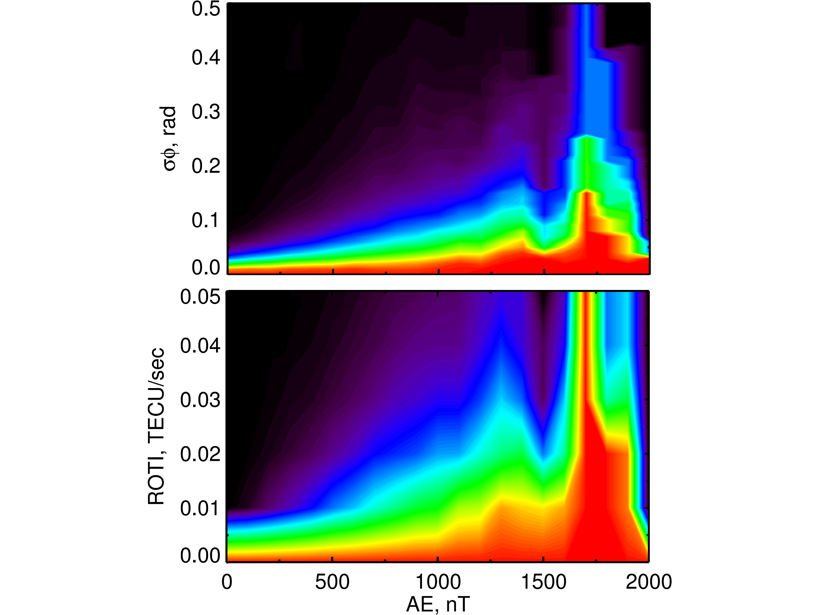
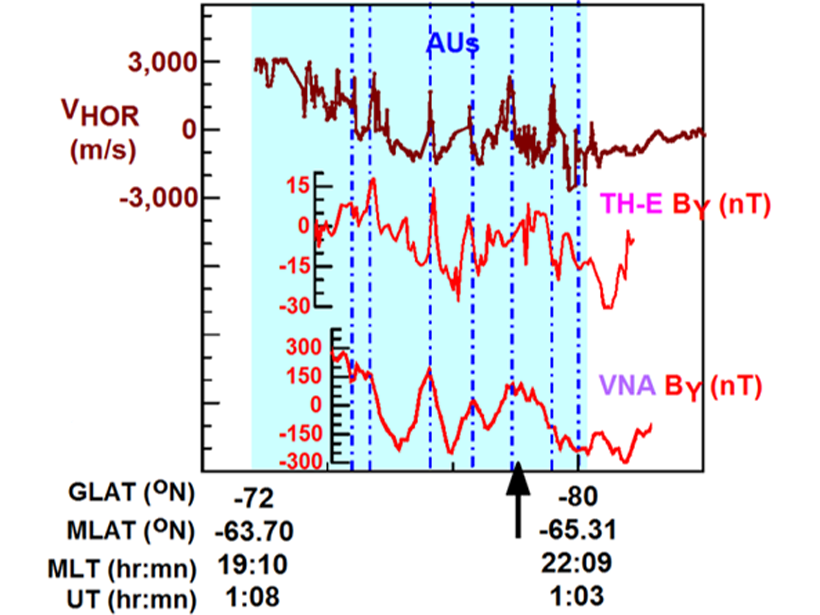
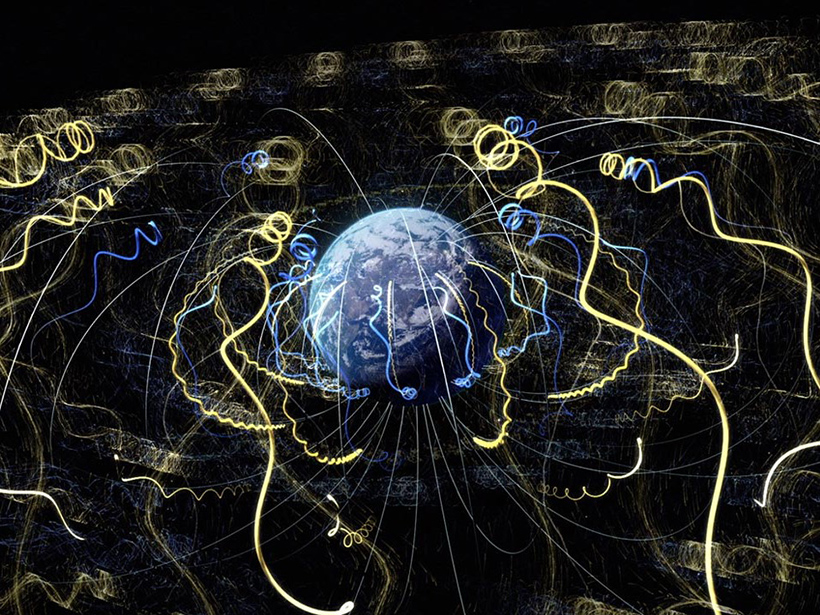
![Two plots showing percent changes in TIME-GCM zonally averaged [O+] and [H+] as a function of latitude and altitude in the Northern Hemisphere between the “disturbed” and “pre-disturbance” time periods in 2012–2013](https://eos.org/wp-content/uploads/2020/12/2020JA028331-Figure-12-top-row-with-legend-sized-for-Eos.png)
